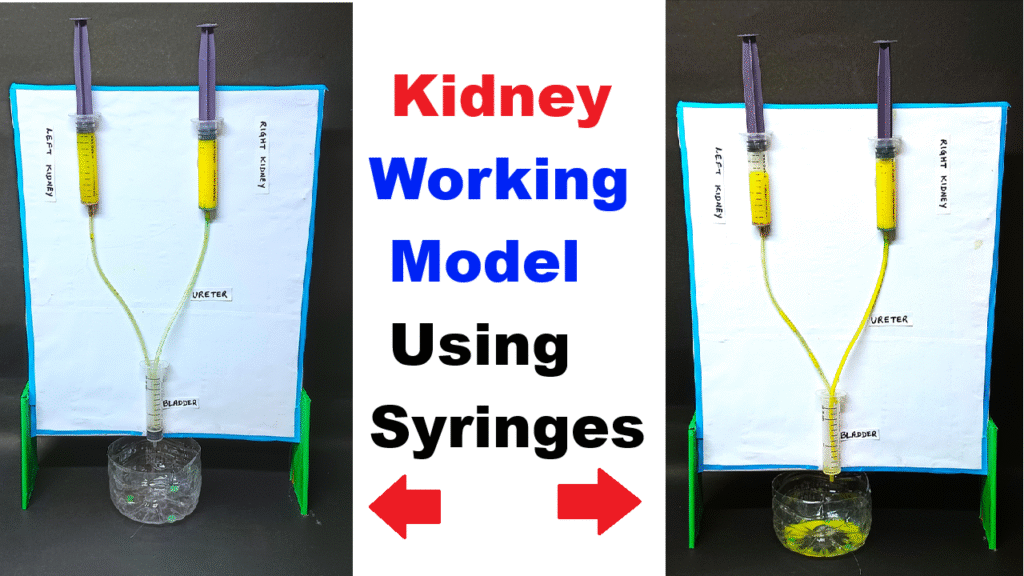Introduction
The kidney is one of the most important organs in the human body. Every person has two kidneys, located on either side of the backbone just below the ribs. They are small and bean-shaped but play a very big role in keeping us healthy.
The main function of the kidneys is to clean the blood. They remove waste products and extra water from the body, which come out as urine. Kidneys also help maintain the balance of salts and minerals such as sodium, potassium, and calcium in the blood. They play an important role in controlling blood pressure and keeping the body’s water level normal.
If the kidneys do not work properly, waste and toxins collect in the body, which can make a person very sick. In severe cases, dialysis or a kidney transplant may be needed. To keep kidneys healthy, we should drink enough water, eat a balanced diet, and avoid too much junk food and salt.
In conclusion, kidneys may be small, but they are like natural filters of the human body. They keep our blood clean and ensure our body works properly.
How to Make Kidney Working Model Using Syringes
This model shows how kidneys filter our blood. The red-colored water in the first syringe is like blood with waste. It passes through a cotton filter in the second syringe, just like nephrons in the kidney filter out waste. Clean water (urine) is collected in the third syringe and stored in a bladder bottle, showing the body’s natural purification system.

Objective:
To show how human kidneys filter blood, remove waste, and produce urine, using a functional syringe-based model.
Materials Required:
| Item | Use |
|---|---|
| 3 Syringes (20ml or 50ml) | To simulate kidney filtration and urine flow |
| Transparent pipes (IV tubes or small plastic tubes) | For fluid flow between syringes |
| Plastic bottle (cut) | Acts as waste collector (urinary bladder) |
| Red & yellow food color | To represent dirty blood and clean filtrate |
| Cotton or tissue | To simulate the nephron filter |
| Cardboard | Base and backdrop |
| Marker pens / color paper | For labeling (kidney, nephron, ureter etc.) |
| Glue gun or tape | For fixing components |
| Paint or sketch pens | To decorate & make it visually appealing |
Model Design Overview:
- Syringe 1: Represents blood with waste (Red-colored water).
- Syringe 2: Filters water through cotton (Nephron).
- Syringe 3: Collects the filtered fluid (urine).
- A pipe connects Syringe 1 → Syringe 2 → Syringe 3 → Waste collector bottle.
Video Step-by-Step Instructions:
Step 1: Prepare the Syringes
- Syringe 1 (Dirty Blood Source):
- Fill with red colored water (add some dust or coffee powder to simulate urea).
- Syringe 2 (Kidney Filter):
- Put a small piece of cotton or tissue inside the nozzle (acts as a nephron filter).
- Syringe 3 (Urine Collector):
- Empty syringe to collect the filtered water (urine simulation).
Step 2: Connect the System
- Pipe 1: Connect Syringe 1 to Syringe 2.
- Pipe 2: Connect Syringe 2 to Syringe 3.
- Optionally add a third pipe from Syringe 3 to a small bottle to simulate urine bladder.
Step 3: Mount and Decorate
- Fix all components on a cardboard base.
- Use another vertical cardboard piece as backdrop for kidney shape cutout.
- Decorate with color paper and labels:
- “Renal Artery” (Syringe 1)
- “Nephron Filter” (Syringe 2)
- “Ureter” (Pipe to Syringe 3)
- “Urinary Bladder” (plastic bottle)
How It Works:
- Push Syringe 1 – dirty (colored) water flows into Syringe 2.
- Syringe 2 filters the water using cotton, removing particles.
- Clean (yellow-colored) water flows to Syringe 3, simulating urine.
- This water is collected in the bladder bottle.

